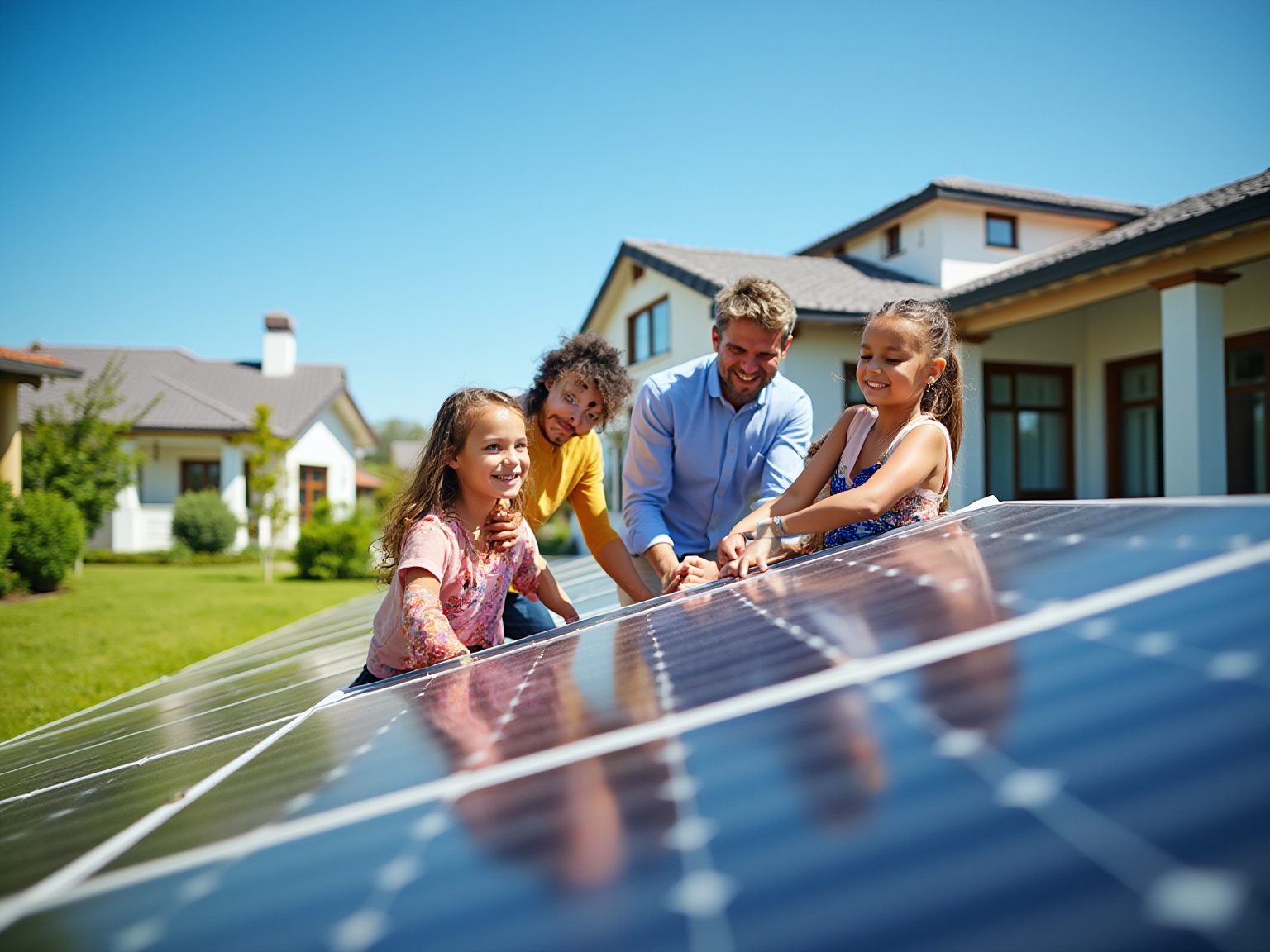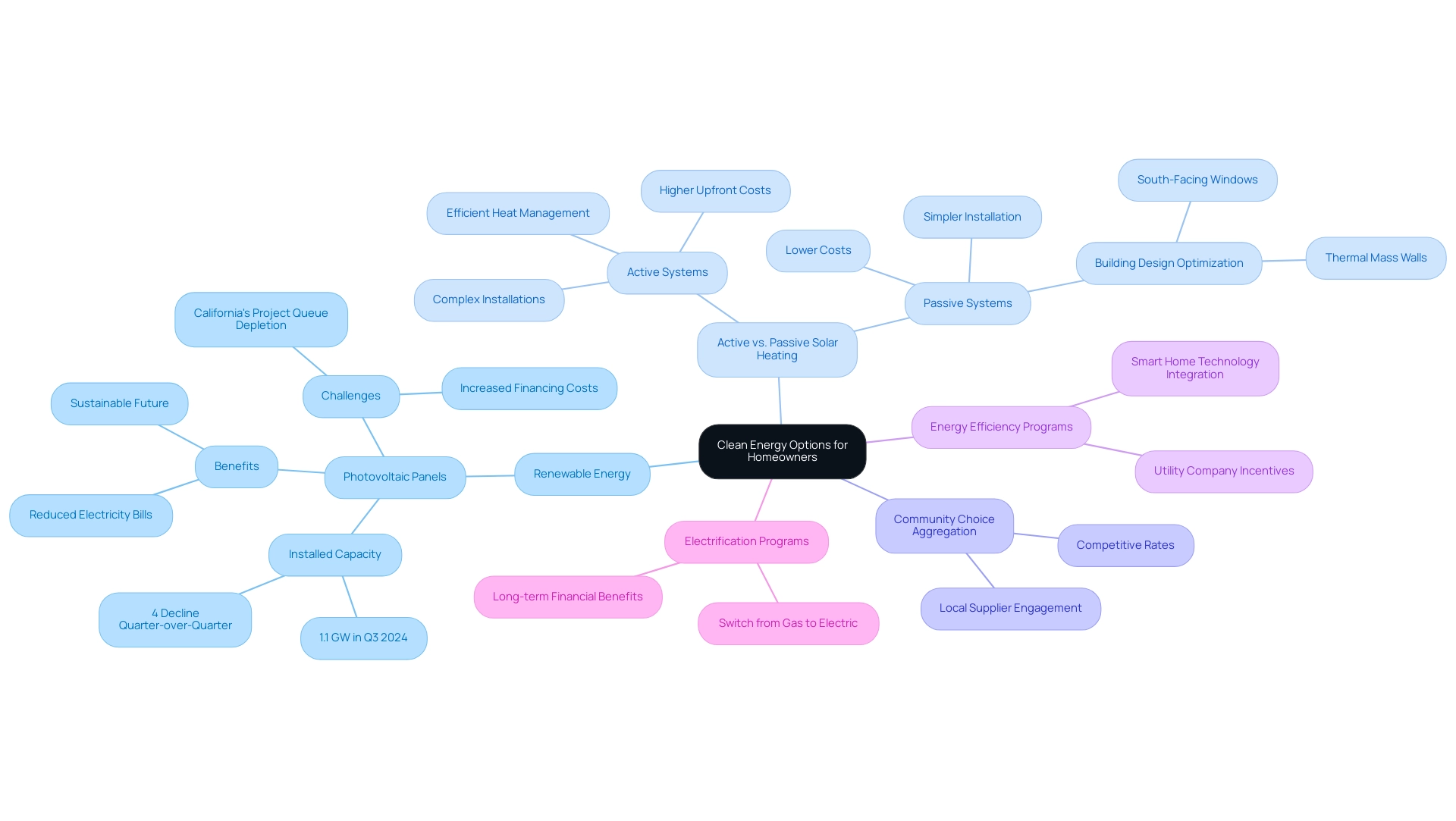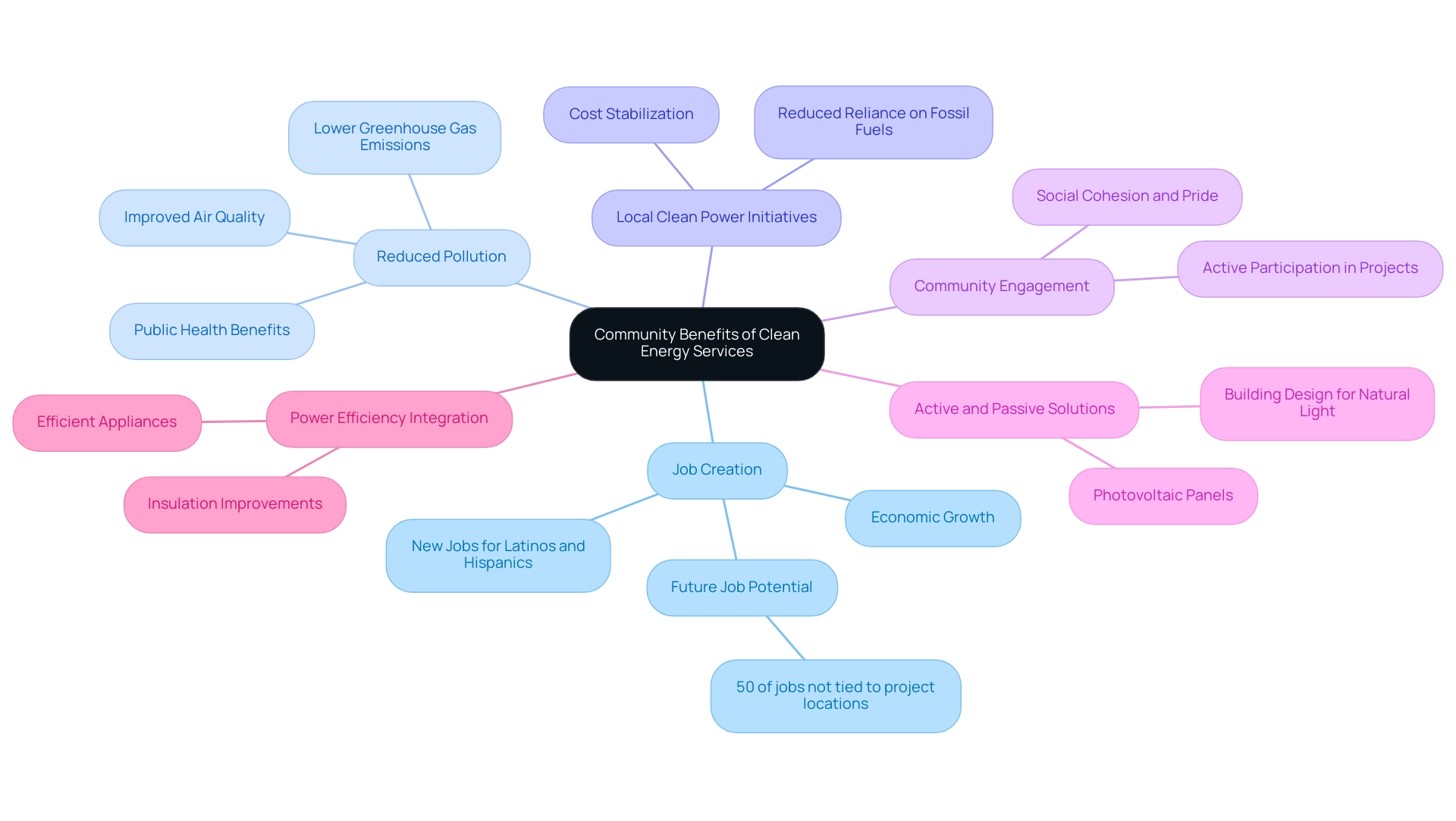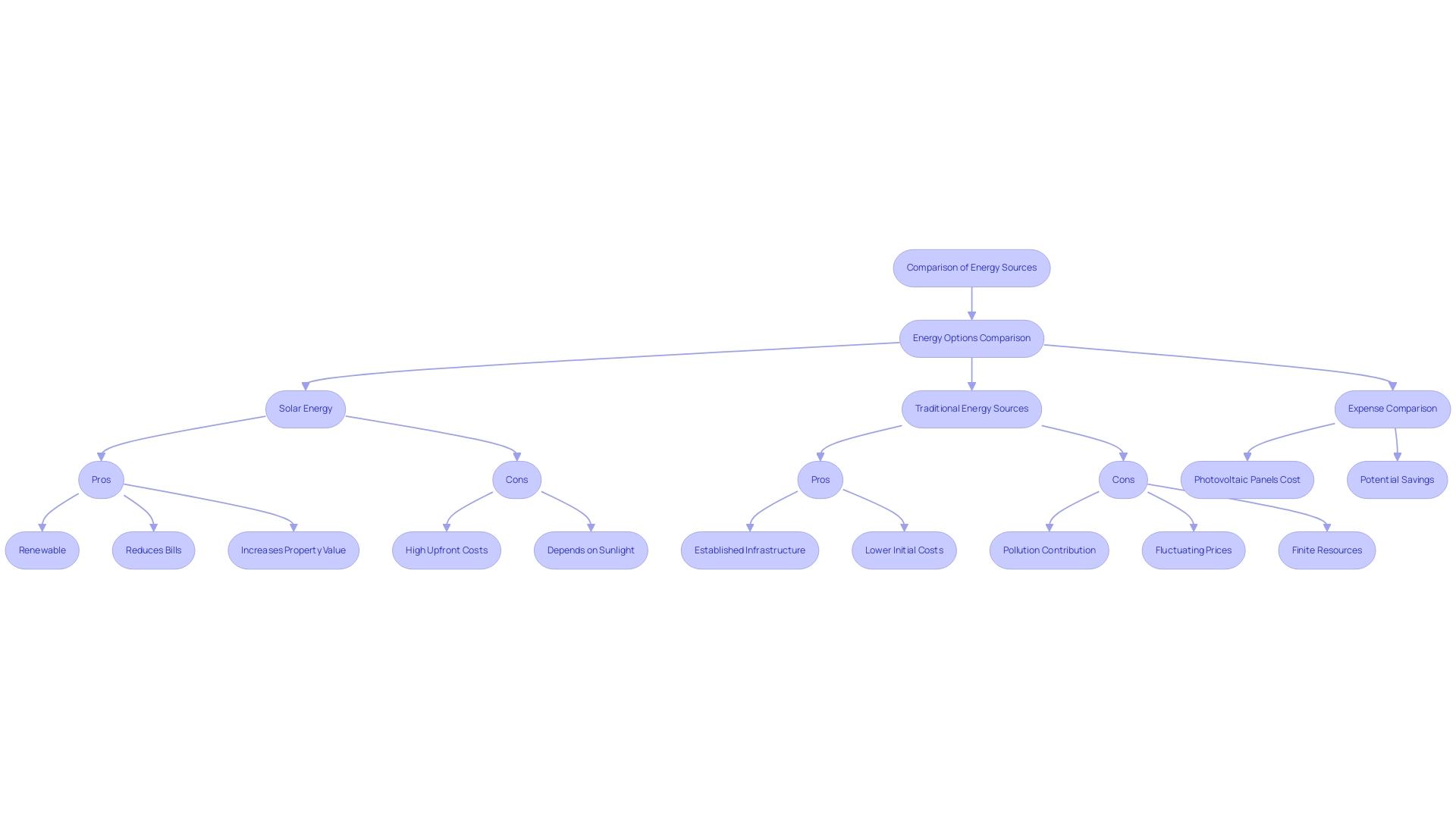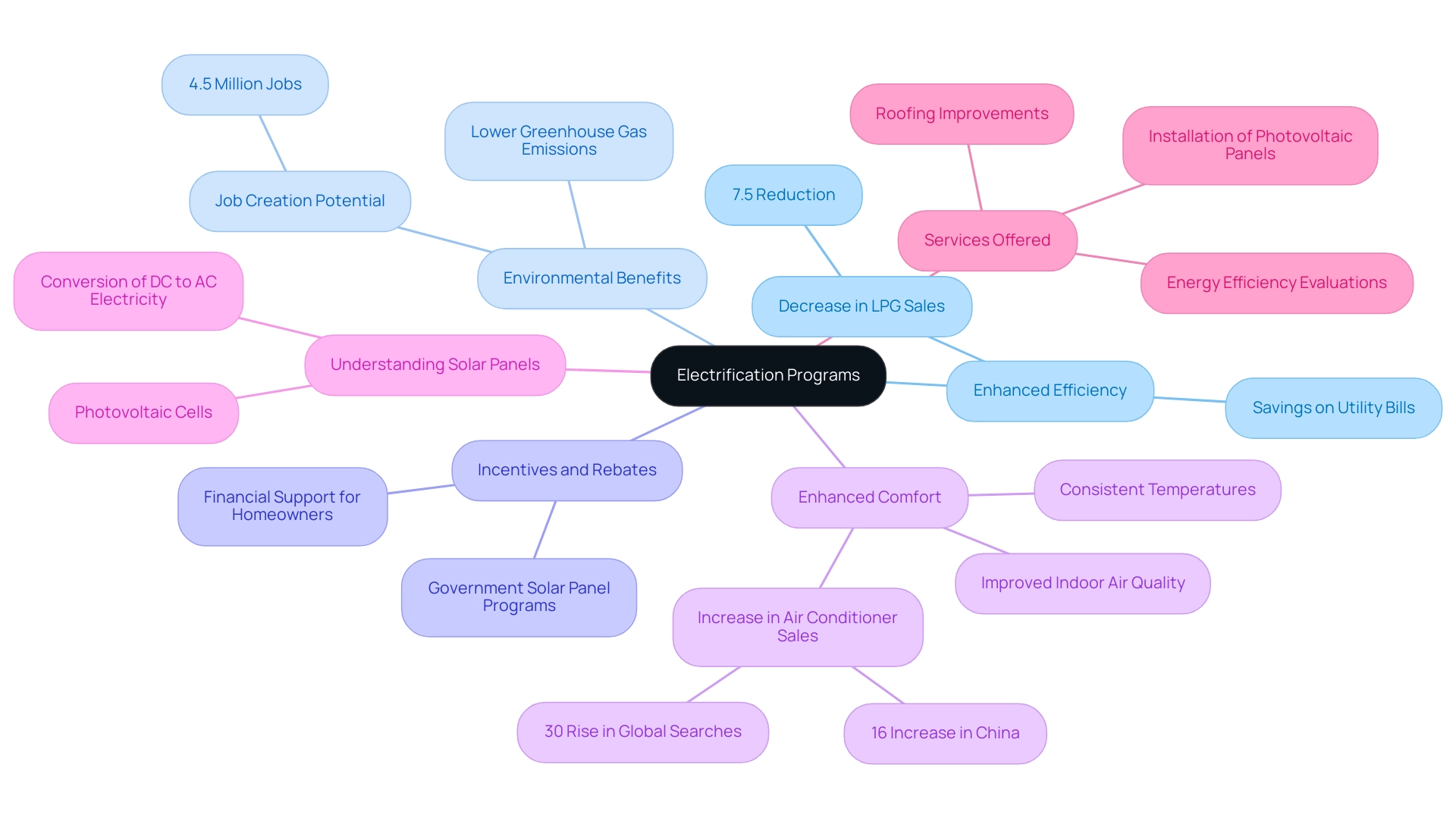Overview
Understanding clean energy services involves recognizing various options such as renewable energy investments, solar heating systems, and community choice aggregation, which empower consumers to reduce energy costs and environmental impact. The article illustrates these choices by detailing how technologies like photovoltaic panels and electrification programs not only enhance energy efficiency and savings but also contribute to broader community benefits, including job creation and pollution reduction.
Introduction
Navigating the clean energy landscape can feel overwhelming, especially for homeowners eager to make sustainable choices that benefit both their wallets and the environment. With a variety of options available, from solar panels to electrification programs, understanding the best fit for individual needs is crucial. This article delves into key consumer choices, highlighting how solar energy, energy efficiency programs, and community initiatives can transform energy consumption.
By exploring these avenues, homeowners can not only reduce their energy bills but also contribute to a greener future for their communities. Whether it’s harnessing solar power or engaging in local clean energy programs, the path to sustainable living is more accessible than ever.
Navigating the Clean Energy Landscape: Key Consumer Choices
Navigating today’s clean energy service landscape opens up a world of possibilities for homeowners looking to enhance their energy consumption and savings. Here are some key options you might consider:
-
Renewable Energy: Investing in photovoltaic panels remains a leading choice for many homeowners.
In Q3 2024, 1.1 GW of residential photovoltaic systems was installed, reflecting a growing trend despite a 4% decline quarter-over-quarter. By harnessing the power of the sun, you can significantly cut down your electricity bills while playing a crucial role in fostering a sustainable future. As Dr. Mark Z. Jacobson from Stanford University observes,
Photovoltaic technologies continue to improve, resulting in the ongoing decline in PV prices, making this energy source more accessible than ever.
Nonetheless, it is crucial to recognize the difficulties such as the reduction of California’s project queue and increased financing expenses, which have adversely affected residential energy installations in early 2024.
-
Active vs. Passive Solar Heating: Homeowners can choose between active and passive solar heating systems.
- Active systems use pumps and controls to circulate heat transfer fluids, making them suitable for homes requiring consistent heating. They involve more complex installations and higher upfront costs but efficiently manage and distribute heat.
- In contrast, passive systems rely on building design and materials to optimize heat absorption, offering a simpler and less costly installation with minimal maintenance needs.
- For example, south-facing windows and thermal mass walls can significantly enhance a home’s ability to capture and store heat.
-
Community Choice Aggregation (CCA): Programs like Marin Clean Power (MCE) enable you to obtain renewable resources directly from local suppliers, often at competitive rates. This empowers you to support clean energy service while potentially saving money on your bills.
-
Energy Efficiency Programs: Many utility companies offer incentives for adopting energy-efficient appliances, enhancing insulation, and integrating smart home technology. These initiatives assist you in reducing your power usage and can result in significant savings over time.
-
Electrification Programs: Making the switch from gas to electric appliances and heating systems is another great way to reduce your carbon footprint.
This shift not only fosters a more sustainable home setting but may also result in long-term financial benefits. Furthermore, it’s thrilling to observe that major U.S. companies, such as Meta, Amazon, Google, Apple, and Walmart, are investing significantly in renewable energy and storage solutions. These firms have collectively contributed to over 18% of U.S. photovoltaic capacity having a corporate offtaker, showcasing a strong involvement in the renewable market.
By understanding these options, you can customize your power usage to fit both your budget and your environmental aspirations, paving the way for a greener future through clean energy service. If you’re prepared to investigate heating systems specifically, consider contacting Powercore Electric. Whether you’re in Berkeley, San Jose, or anywhere throughout California, our team is here to offer you reliable solutions, ensuring efficiency and sustainability while assisting you in reducing utility expenses.
Get your free, personalized estimate today!
The Community Benefits of Clean Energy Services
Clean energy service provides more than just personal advantages; it plays an essential role in enhancing entire communities. Here’s how these services contribute to a greener, healthier future for everyone, especially for Long Beach renters looking to harness solar power:
- Job Creation: The clean sector is booming, and in 2023, nearly one-third of new jobs were held by Latino and Hispanic workers—an increase of 79,000 positions. The International Energy Agency (IEA) estimates that about 50% of jobs created through 2030 will not be tied to project locations, highlighting significant growth potential. This not only supports families but also stimulates local economies by providing jobs in installation, maintenance, and technology development.
- Reduced Pollution: Transitioning to renewable power sources allows communities to drastically lower greenhouse gas emissions, leading to improved air quality and better public health outcomes. By embracing renewable power, Long Beach residents can create a significant effect on pollution reduction, fostering a healthier environment for everyone.
- Local clean power initiatives: Local clean power initiatives assist in decreasing reliance on imported fossil fuels. This transition promotes greater power independence and stabilizes costs, benefiting homeowners and businesses alike, making photovoltaic options a smart choice for renters seeking clean energy service.
- Community Engagement: Many programs related to clean energy service encourage residents to participate actively, allowing them to invest in local projects. This not only enhances social cohesion but also instills a sense of pride and ownership within the community, making it easier for renters to feel connected and engaged.
- Active and Passive Solutions: Renters can explore both active and passive heating options. Active systems, such as photovoltaic panels, convert sunlight into electricity, while passive systems utilize building design to maximize natural light and heat. Comprehending these choices can assist tenants in making informed decisions regarding their consumption.
- Power Efficiency Integration: Combining power efficiency strategies with renewable solutions can further improve savings and sustainability. For example, utilizing efficient appliances and insulation in conjunction with solar power can greatly decrease overall usage, maximizing the advantages of adopting solar.
As Liz Shuler, AFL-CIO President, stated, “Thanks to the Biden-Harris administration’s historic investments, clean employment opportunities are booming in every single state.” With union density in clean sectors at record highs, it’s clear we can create good jobs and advance a cleaner economy simultaneously.
Additionally, addressing informal employment in the sector can enhance local value, attract investment, and improve workers’ lives, while also offering opportunities to improve gender balance in the workforce.
Choosing clean energy service isn’t merely an individual decision; it’s a joint initiative that fortifies our communities and encourages a sustainable future for everyone, particularly for those Long Beach tenants prepared to adopt photovoltaic solutions.
Understanding Your Options: Solar vs. Traditional Energy Sources
When examining your power choices, it’s essential to consider the benefits and drawbacks of photovoltaic power compared to conventional sources. Here’s a closer look:
-
Solar Energy:
-
Pros: Solar power is renewable and can significantly reduce your electricity bills. For Long Beach tenants, utilizing a clean energy service through renewable solutions can increase property value while offering a degree of power autonomy that conventional sources cannot equal.
As Laura Leiva, a content writer, puts it, > Making renewable power more attainable leads to a greener future while helping homeowners save money and enhance the value of their properties <. Additionally, with wholesale electricity costs anticipated to be two to three times higher than 2020 averages, investing in renewable power sources, including options like photovoltaic panel shingles and Tesla home chargers, can be a financially wise choice. Government programs and cleaning services can also make solar more accessible for renters.
-
Cons: However, it’s important to consider the high upfront costs of installation and the technology’s dependence on sunlight availability.
-
-
Traditional Energy Sources (Coal, Natural Gas):
- Pros: These sources benefit from an established infrastructure and often have lower initial costs for consumers.
- Cons: They contribute significantly to pollution and are subject to fluctuating prices, as well as being reliant on finite resources. For instance, hydropower generation, while virtually emission-free, has seen a decrease since its peak in 1997, with 240 TWh produced in 2023. This decline raises environmental concerns such as fish mortality and habitat degradation, though innovative solutions like ‘fish-friendly’ turbines are being developed to mitigate these impacts.
Understanding these differences allows you to make an informed decision about the clean energy service that aligns with your values and power needs. As you contemplate transitioning to photovoltaic systems, remember that recent research shows that renewable sources can reduce your monthly expenses and enhance your home’s appeal to prospective purchasers, due to the increasing interest in sustainable living options. Furthermore, the U.S. Department of Energy predicts that by 2050, 404 GW of total wind capacity could satisfy 35% of U.S. power demand and prevent 12.3 Gt of CO emissions, highlighting the potential of renewable sources in minimizing our carbon footprint.
Expense Comparison
When comparing expenses, installation of photovoltaic panels can range from $15,000 to $25,000 before incentives, while conventional power prices can differ significantly based on usage. For Long Beach tenants, possible savings from renewable energy can total $1,000 or more each year, depending on energy usage. Initiatives such as the Federal Solar Tax Credit can also lower installation expenses by 26%, making renewable energy more financially feasible.
Testimonials
Consider the experience of local renters like Sarah, who installed photovoltaic panels and reduced her electricity bill by over 50%. She notes, > Transitioning to renewable energy not only reduced my expenses but also enhanced my home’s attractiveness to potential buyers <. Such testimonials emphasize the concrete advantages of adopting renewable power.
Electrification Programs: Making the Switch
Electrification programs are an excellent pathway for homeowners to transition from gas-powered appliances to electric alternatives, and this switch can bring about significant benefits:
- Enhanced Efficiency: Electric appliances frequently surpass gas models in power efficiency, resulting in noticeable savings on your utility bills. Recent studies show that each extra kilowatt-hour (kWh) of electrification corresponds with a decrease of 0.27 kg in LPG sales—a change that reflects rising efficiency and aligns perfectly with the objectives of government panel initiatives.
- Environmental Benefits: Reducing reliance on fossil fuels contributes to lower greenhouse gas emissions, fostering a cleaner environment. This shift is essential as we strive to meet ambitious sustainability targets. The potential of electrification programs is substantial, with expectations that doubling targets could create 4.5 million jobs in efficiency across various sectors, promoting a greener future.
- Incentives and Rebates: Many electrification initiatives, including government solar panel programs, offer enticing financial incentives and rebates, making it easier and more affordable for homeowners to switch to electric technologies. This financial support can significantly lower upfront costs, enhancing the feasibility of upgrading your home with renewable energy solutions.
- Enhanced Comfort: Electric heating and cooling systems provide consistent temperatures and improved indoor air quality. Homeowners often find that electric systems help maintain a comfortable living space, especially during extreme weather. For instance, a 16% increase in air conditioner sales during rising temperatures reflects this trend, alongside a more than 30% rise in global searches for air conditioners during the summer heat waves.
- Understanding Solar Panels: Solar panels function by transforming sunlight into power through photovoltaic cells. When sunlight strikes these cells, it produces an electric field that generates direct current (DC) power. An inverter then converts this DC electricity into alternating current (AC) electricity, which can be used to power your home. By incorporating photovoltaic panels into your electrification initiatives, you can further decrease your power expenses and dependence on fossil fuels.
- Services Offered: Our offerings encompass the installation of photovoltaic panels as well as thorough evaluations to optimize your savings. Additionally, we provide roofing improvements that enhance your home’s energy efficiency and protect your investment against the elements. Our clean energy service includes exploring electrification programs, which, along with the benefits of solar energy savings and energy storage solutions, not only align with eco-conscious values but also enhance your energy efficiency and reduce your environmental footprint. Real-world examples show that homeowners who switch to electric appliances can enjoy these benefits while contributing to a greener future.
Conclusion
Homeowners have a wealth of options when it comes to embracing clean energy and making sustainable choices that benefit both their finances and the environment. From solar energy to electrification programs, each avenue presents unique advantages and opportunities for savings. Investing in solar panels can dramatically reduce electricity bills, while energy efficiency programs and community initiatives further enhance sustainability efforts and engage residents in the transition to greener energy sources.
The positive impact of these choices extends beyond individual households. Clean energy initiatives contribute to job creation, improved air quality, and energy independence, fostering healthier communities. By participating in local clean energy programs, homeowners can support sustainable practices that uplift their neighborhoods and promote collective well-being.
Ultimately, the journey toward a greener future is more accessible than ever. With federal incentives and community support, transitioning to renewable energy is not just a personal decision but a communal effort that strengthens connections and enhances quality of life. Embracing these clean energy solutions not only aids in reducing carbon footprints but also paves the way for a sustainable and economically beneficial future for all. Exploring these options is the first step toward making a meaningful impact on both personal and community levels.


